#Horace Warner
Text
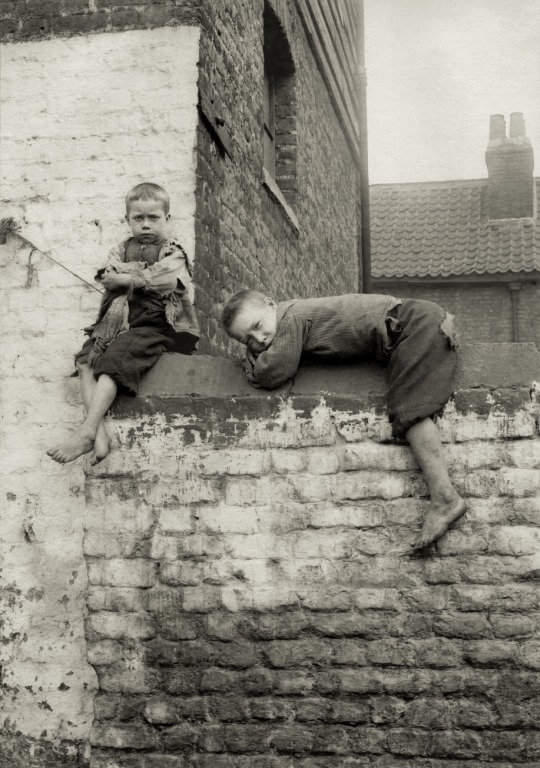
Brothers: boys sitting on the wall, London, ca. 1902 - by Horace Warner (1871 - 1939), English
162 notes
·
View notes
Text
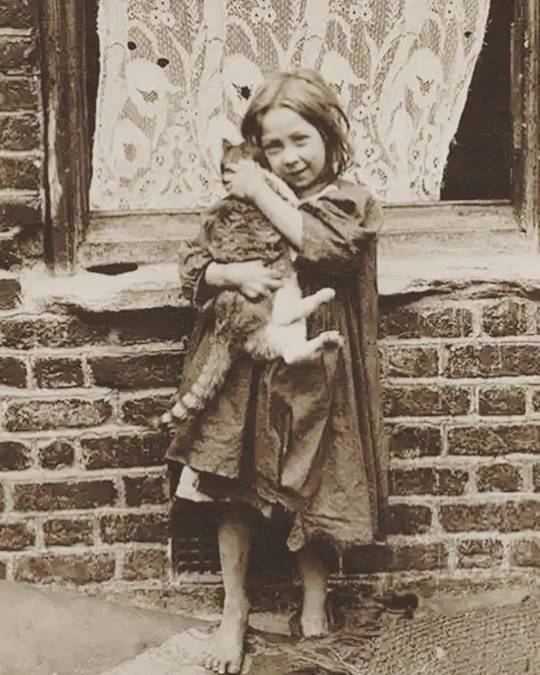
I wrote a letter
To my inner child
And, I told her
How loved she was by me
And, if no one else
Ever told her so
She knew
How loved she was, by me
A Little Poem by Athey Thompson
Taken from A little pocket book of poems by
Athey Thompson.
A little girl and her cat in the streets of East London, Early 1900s.
Photograph taken by Horace Warner.
Tales of the old Forest Faeries
8 notes
·
View notes
Text
updated list (up to 5 pages now!)
1913 - Krazy Kat
1914 - Gertie Dino
1918 - Koko the clown
1919 - Felix the cat
1919 - Olive Oyl
1922 - Julius the cat
1925 - Pete
1926 - Winnie the Pooh
1927 - Oswald the lucky rabbit
1927 - Ortensia cat
1928 - Clarabelle cow
1928 - mickey mouse
1928 - minnie mouse
1929 - horace horsecollar
1929 - Bosko talks Ink kid
1929 - popeye the sailor man
1930 - pluto
1930- bimbo
1930 - betty boop
1932 - goofy goof
1932 - Bluto
1933- Buddy (looney tunes)
1934 - donald duck
1935 - porky pig
1935 - little kitty
1935 - oliver owl
1935 - ham & ex
1935 - beans the cat
1936 - owl Jolson
1937 - Petunia pig
1937 - gabby goat
1937 - Daffy duck
1937 - egghead
1937 - elmer fudd
1937 - della duck
1937 - HDL
1939 - Casper
1939 - Sniffles
1939 - Barney Bear
1940 - Tom & Jerry
1940 - daisy duck
1940 - bugs bunny
1940 - woody woodpecker
1941 - Butch (alley cat)
1941 - Toodles (tom’s love interest)
1941 - Fauntleroy fox
1941 - Crawford crow
1942 - Spike the dog
1942 - Tuffy/Nibbles
1942 - Beaky buzzard
1942 Mama buzzard
1942 - Henery hawk
1942 - wolf (blitz wolf)
1942 - jose carioca
1942 - tweety bird
1943 - meathead (tom n jerry)
1943 - droopy
1943 - Chip and Dale
1943 - red (red hot riding hood)
1943 - topsy (tom n jerry)
1944 - screwy squirrel (mgm)
1944 - Panchito pistoles
1945 - Sylvester cat
1945 - Pepe le Pew
1945 - yosemite sam
1946 - gossamer
1946 - foghorn leghorn
1946 - george (henpecked hoboes)
1946 - junior (henpecked hoboes)
1947 - goofy gophers (Mac and Tash)
1947 - scrooge mcduck
1948 - gladstone gander
1948 - hippety hopper
1948 - Marvin the Martian
1948 - Lightning (tom and jerry)
1949 - butch (tex avery)
1949 - wile e Coyote
1949 - road runner
1949 - tyke the pup
1949 - playboy penguin
1949 - penelope pussycat
1950 - little quaker (tom n jerry)
1950 - granny
1950 - Sylvester Jr
1950 - snoopy
1951 - clyde bunny
1952 - gyro gearloose
1953 - sam sheepdog
1953 - ralph wolf
1953 - southern wolf (tex avery)
1954 - Goldie o-gilt
1954 - Taz
1954 - witch hazel
1954 - speedy Gonzales
1955 - Michigan J. Frog
1956 - flintheart glomgold
1957 - grinch
1958 - huckleberry hound
1958 - yogi bear
1958 - boo boo
1959 - quickdraw McGraw (Latino)
1959 - snugglepuss (gay)
1961 - Ludwig von drake
1961 - magica de spell
1964 - fethry duck
1967 - woodstock (peanuts)
1978 - Garfield
1981 - Mario
1981 - donkey kong
1981 - Pauline
1983 - Luigi
1985 - princess peach
1985 - bowser
1987 - webby
1987 - Beakley
1987 - launchpad
1987 - Duckworth
1988 - Roger Rabbit
1988 - Jesscia Rabbit
1988 - Benny the cab
1989 - Fenton
1990 - babs
1990 - buster
1990 - plucky
1990 - hamton
1991 - sonic the Hedgehog
1991 - doctor Eggman
1991 - drake mallard/darkwing wingduck
1992 - tails
1993 - Amy rose
1993 - yakko warner
1993 - wakko warner
1993 - dot warner
1994 - knuckles
1996 - lola bunny
1999 - spongebob
2001 - shadow
2001- Shrek
2001 - donkey
2001- princess fiona
2001 - gingerbread man
2001 - Pinocchio
2004 - puss in boots
2007 - Shaun the sheep
2007 - Bitzer
2011 - kitty softpaws
2011 - Humpty Dumpty
2011 - tina russo
2011 - (dhmis) Red guy, yellow guy and duck
2017 - Lena de spell
2017 - mark beaks
2022 - perrito
2022 - death
21 notes
·
View notes
Photo

🔸 c1900, photographer Horace Warner captured over two hundred startling images of children living in a rundown slum area of East London. He named these children the ‘Spitalfields Nippers’. In 1913 the Bedford Institute paid two pounds, 15 shillings and sixpence for roughly 20 photographs he had taken of the local children. It used them in its fundraising activities, reproducing them on handbills and collection boxes. He was a superindant for the charitable Bedford Institute (nine Quaker missions operating in the East End of London at the end of the 19th cent) rand was appalled by the poverty in much of the East End of London. His Quaker faith and own compassion led him to document the people he met and show them as real human beings. The pictures are posed but the genuine faces shine through. They are children surviving in conditions hard for us to imagine now (though not in other parts of the world); adolescents often already working in a harsh world with no safety net. Many have no shoes and clothes handed down or bought at the thrift shops of the time or the many markets in London. Though Governments seemed lamentably slow to act, many individuals, authors (notably of course Dickens) and artists depicted the life of the poor, often particularly the children. The paintings were often toned down to sell but the rich in London often lived close to areas where they would have seen such children every day….here’s a 2nd set of photos Credit: Horace Warner/Charles Booth #victorianchaps #retro #victorian #dickensian #goodolddays #badoldtimes #poverty #london #vintqge #pastlives #history #1900s #streetlife #nostalgia (at Spitalfields London) https://www.instagram.com/p/Co7NaD6jAjx/?igshid=NGJjMDIxMWI=
#victorianchaps#retro#victorian#dickensian#goodolddays#badoldtimes#poverty#london#vintqge#pastlives#history#1900s#streetlife#nostalgia
22 notes
·
View notes
Text
Anonymous asked: What role does humor play in your life? How do you look at comedy and its role in culture? Do you think comedy today is more or less funny as woke culture has its itchy trigger finger at the ready to cancel anyone that mocks it? Is it harder for edgy comedians like Dave Chappelle to remain relevant in today’s toxic society?
Your questions are quite wide and so I hope I can hone in on some of the issues you raised.
I don’t think I’m different from anyone in general in not only loving comedy but also having humour in one’s life. I’ve watched my fair share of comedian stand up sets at comedy clubs and shows (Eddie Izzard, Andy Parsons, Ross Noble, Jack Dee, Stewart Lee, Frankie Boyle and so on).

I try to start my day by watching or reading something funny like an online clip or an article, essay or chapter (think Clive James or Anthony Lane or P.G. Wodehouse) - just to set the tone for the rest of the day. Because let’s face it, one look on the home page of any news media from the BBC or the Economist makes for depressing shitty reading.
Put another way, I’m like the girl who gets up one fine morning and wears a brand new white pair of shoes at school. You just know those white shoes are going to get battered around. They’ll get all kinds muddy shoe prints stomped on it and likely chewing gum and dog poo under it. But least you started the day clean. That’s how I feel about humour in my daily life.
I’m fortunate that I have a close circle of friends who make me laugh and that is precious. We text and send each other stuff throughout the working day. It’s light relief for a stressful day at work.
I try not watch comedy on a plane on my lap top. I think the air stewardess in my business class flight always think I need a sedative because I usually get a severe case of the giggles. I try so hard not to laugh out loud out of respect to the sleeping passengers near me. I just can’t help myself. I wet my knickers laughing so hard.

My perspective on and indeed my insatiable need for comedy in my life can best be summed up by that 18th Century man of letters, Horace Walpole who wrote, “The world is a tragedy to those who feel, but a comedy to those who think.”
For me the best comedy is hilarious and humane but equally brutal and true. Like many people I grew in a home where humour was the life blood of our family especially around the dinner table and just generally goofing off. The jokes to point out our foibles or pratfalls acted like glue to bind us together more strongly. As times goes on and as one matures you also learn to lean into humour as a personal coping mechanism when dark clouds gather above. But it’s also a mark of maturity that you also become self aware of humour as a commentary on things that lie just beneath the thin skin of society.
Humour has been on the minds of thinkers for centuries. My eldest sister who is a neurosurgeon and is interested in humour as a side topic of interest gave me a book on the psychology of humour as a birthday gift. As Peter McGraw and Joel Warner explain in their insightful book, The Humor Code: A global search for what makes things funny, “Plato and Aristotle contemplated the meaning of comedy while laying the foundations of Western philosophy… Charles Darwin looked for the seeds of laughter in the joyful cries of tickled chimpanzees. Sigmund Freud sought the underlying motivations behind jokes in the nooks and crannies of our unconscious.” A good read.

We tend to see comedy through the romantic lens of the one-off inspired comic whose unique view of the world is entertaining. But the focus on the individual witty voice misses the gigantic, political nature of the task of comedy. Comedy isn’t just a bit of fun. We don’t laugh at things unless they cause us very serious problems at other points in life. We can see this in the standard category of jokes: about relationships, family, sex, money, impotence, bowel movements, identity etc. We laugh most readily around things that in other ways are very distressing. A good joke invariably has a relationship with darkness, anxiety and pain.
I’ve always valued humour in people as a precious gift. I love having a laugh and even more if it’s at my expense. Perhaps that comes more readily to the British who appreciate the existential absurdity of life and don’t particularly make an effort to climb out of the hole they fell into…and if they do then we bring them down a peg or two.
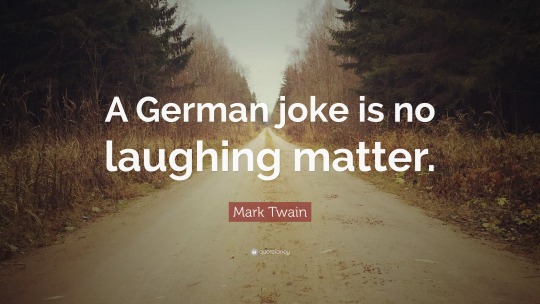
But Northern Europeans have an even drier sense of humour, yes, including the Germans (it’s there…somewhere) but in the Swiss it’s totally absent. Norwegians have perhaps the driest sense of humour in Europe and that partly stems from the fact of its social code of janteloven - the idea that you mustn’t think of yourself better than anyone else. Because of this I firmly believe humour should be an equal opportunity offender. Moreover what I love about enjoying a good joke is that one the singular properties of certain comedy when done well is the freedom to explore ideas in an unconventional or counterintuitive way, to subvert society’s norms.
No one does that better than a comedian in culture in flux. As the great George Carlin put it, “I think it's the duty of the comedian to find out where the line is drawn and cross it deliberately.“
I’ve always been naturally drawn to dark humour from an early age and I suspect that had a lot to do with being packed off to boarding school at a young age (for my peers it was as young as 7) and just learning to develop coping mechanisms in the face of parental abandonment (or it seemed that way).

However I didn’t know the real importance of dark humour until I actually served in the British army and found humour as a form of therapy to deal with stress and situations of life and death with my army brothers and sisters. Our shared jokes were so off colour and un-PC that we would dare not repeat them in polite and respectable company. But that kind of shared humour served a crucial importance as any soldier will tell you. By mocking dangerous things or the situations you might find yourself with others, humour can embolden us. It helpfully paints what is potentially very frightening as deeply ridiculous. Joseph Heller’s ‘Catch-22’ captures the spirit of the absurdity of it all.

The comic perspective fills a central need of every society; it enables us to cope much better with our own follies and disappointments, our troubles around work and love and our difficulties enduring ourselves. Comedy is waiting to be reframed as a central tool behind the creation of a better world.
Comedy offers us a way of having a better time around things which, otherwise, can feel pretty disastrous. Ideally, in the utopia, comedy and its therapeutic potential wouldn’t be left to chance. Humour would be deliberately cultivated as a benign response to a range of entrenched difficulties. Previously, certain countries had an elaborate carnival season devoted to enforced comic activities. For a brief time, the weak could boss around the powerful, priests and nuns were supposed to hold obscene rituals in their churches, serious people were required to get drunk and throw bags of flour over each other’s heads. Humour wasn’t just left to those who felt so inclined: it was a kind of duty.
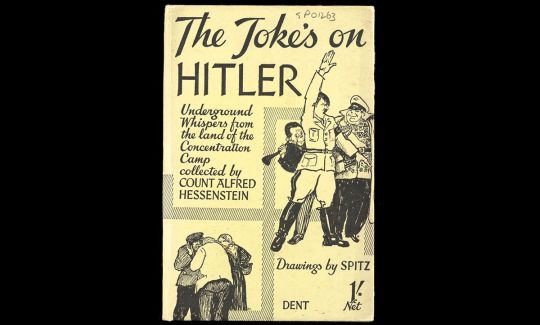
Black humour was a means of reducing anxiety of the awareness of death. Historians now know that one of the things that helped the persecuted Jewish community survive the demented Nazi persecution creeping into full blown genocide was humour, often of the darkest kind.
An example well-known joke went like this in Warsaw: "Moishe, why are you using soap with so much fragrance?" - "When they turn me into soap, at least I will smell good”. Jokes about soap were in response to rumours which started circulating in 1942 about soap produced from the fat of the Jews. Other jokes of this kind: "See you again on the same shelf!" or "Don't eat much: the Germans will have less soap!"
Indeed Jewish humour did not die in the Holocaust. In fact, Jews depended on humour to endure the period after liberation, both as a psychological weapon to grapple with what they had endured under Nazi persecution and as a source of coping with the displacement of the postwar period. After the war, humour was a poignant affirmation of mir zaynen do - we are (still) here - a declaration that the Jewish people had not disappeared and indeed could at times have the last laugh.

Does comedy have something to teach us or can we use comedy to teach? That is an interesting question in itself.
When I discuss this with friends across the political and non-political spectrum, some have argued comedy can’t be didactic as its the ultimate contradiction in terms. It’s why they hate woke comedy that often pervades the BBC these days and even the comedy clubs. These friends and I would sometimes go to the Edinburgh Festival to see comedians live on stage. But they say none of what passes for comedy on stage is funny because of the politics of woke.
I would disagree. Not about woke comedy - which ranges from pedestrian to just awful. But I will say that some of the best comedy is didactic. That’s because the best comedy is about revealing hilarious truths.
The ancient biblical books of Jonah and Esther, for example, have comedic elements that are clearly didactic. William Shakespeare’s ‘Much Ado about Nothing’ is didactic. The Marx Brothers’ ‘Duck Soup’ and ‘A Night at the Opera’ are didactic. Mel Brook’s ‘The Producers’ (original only) and ‘Blazing Saddles’ are didactic.

For us Brits, Monty Python is didactic, especially in its masterpiece, ‘Life of Brian.’ For Americans, ‘Seinfeld’ is didactic precisely because it’s about nothing. From ‘The Great Dictator’ to ‘Dr. Strangelove’ and ‘Blackadder series’ to ’South Park’, you will find that great comedy can be didactic.
The problem my friends identified is not that woke comedy is didactic, but rather that the woke side of the moon has no light of knowledge to impart. Woke ‘comedy’ tries to be didactic and fails because it has nothing profound or interesting to teach.
Comedy is not merely an event that produces laughter. A fart is not comedy (although it could be). The difference between comedy and tragedy is tonal. Both stem from the inflexibility of the ego.
This is why for example Shakespeare’s ‘Much Ado About Nothing’ is such a remarkable comedy. The two people who want to be viewed as most principled in their objection to romance are so easily pushed over into love, because their hearts are ultimately farcical. The hilarity stems from the disconnect between their inner and outer selves.

While the ridiculous disconnect between the ego and reality makes us laugh here, it could just as easily make us weep if the situation were changed. The fundamental difference between Shakespeare’s comedies and his tragedies is the ending. Everyone gets married at the end of his comedies and everyone dies at the end of his tragedies. Yet Hamlet and Macbeth are still felled by their own inflexible egos, just as Benedict and Beatrice are made to be wonderful, humorous fools for love by the same principle of human nature.
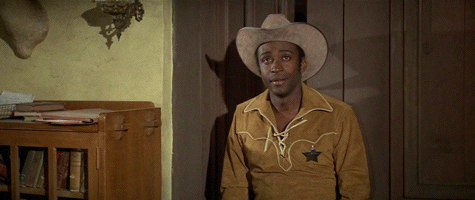
Comedy’s didactic nature is even clearer when we look to films like ‘Duck Soup’ or ‘Blazing Saddles.’ ‘Duck Soup’ is a scathing indictment of goose stepping fascism (of the real kind and not the lazy insults lobbed over these days) and arguably the Marx Brothers’ funniest film. ‘Blazing Saddles’ does the same for American racism. Neither is necessarily meant to be interpreted along propositional or pedagogic lines. Regardless, those films teach and they teach well. They expose the absurdities of reliance upon authoritarian government and identity politics to solve our problems.
The problem with woke comedy is that woke comics want to convince people to do the right thing, to hold the right view, in other words to moralise if we want to be considered good people - which we all do. But the politics behind woke politics is fundamentally ridiculous. That’s why it can be so easily used for comedy: their core concepts and assumptions (gender and biology in trans ideology or the darker you are on the colour spectrum, the greater your societal victimhood) are easy to mock.
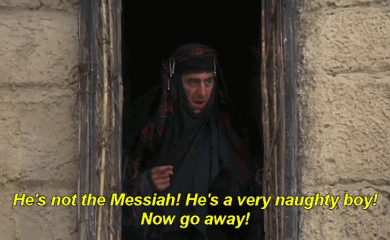
In ‘Life of Brian,’ the Pythons did not mock Jesus. They mocked institutionalised religion. When Jesus appears, it’s in the background, he only speaks scripture, and his portrayal is markedly respectful. Nothing else in the film is respectful - everything else is treated like a huge hilarity. John Cleese said the reason they didn’t try to make Jesus funny is that they didn’t think he would have been funny.
According to John Cleese, Jesus didn’t have an ego to bruise or be inflexible. Yet Jesus was a complete and humble person. If he slipped on a banana peel and fell, he would have found it just as funny as anyone else. That’s because Jesus was self-forgetful. You can’t mock someone who gets the joke. So you can’t turn Jesus into a joke, because he’s not threatened by jokes.
One of the most enduring theories of humour arrived courtesy of the philosopher Thomas Hobbes. It asserts that humour is ostensibly about mocking the weak and exerting superiority. While this is clearly the function of some comedy – anyone who has flinched at a comic’s lame attempt to poke fun at, for example, disability will attest to this – it’s a relentlessly bleak and far from complete explanation of the purpose of humour. It’s better for a comedian to punch up then down.

So the real question today’s politically charged climate especially in the so-called culture wars (more visible in the Anglo-American world rather than in the rest of the world) is who is doing the punching up and who is punching down?
It depends as each side of the political divide claims the lower ground ie they are the weaker and therefore don’t deserve to be punched down upon but they can freely punch up.
Dave Chappelle’s comedy is the absurdity behind the so-called victim olympics that pervades behind woke culture. So making jokes about people of colour by white people is punching down but, as Chappelle alludes, people of colour can’t make jokes about white men in skirts ie trans because that’s now a greater sin and it would be punching down. In accepting the Mark Twain Prize for American Humour in 2019, Chappelle said a good joke is a finely crafted joke and one designed to offend regardless of one’s feelings or of one’s politics. Victimhood in terms of giving personal or political offence has no place in comedy.
I believe a joke is a joke. It doesn’t matter where it comes from so long as it’s funny. If you laugh, you own it.
I personally think much of our popular culture is overwhelmingly left - from Hollywood to the BBC - I don’t think that should be a controversial statement. It’s nearly always been that way as it attracts a certain kind of creative content maker whose values are liberal in the classical sense. There’s nothing wrong in that because this liberalism of the past didn’t necessarily inject itself into the art except in very benign ways but mainly it just told a damn good story or made us laugh because they told genuine funny jokes (from Python to Blackadder and Frasier to the Simpsons).
I think that’s changed now as woke ideology is increasingly the raison d’etat of a new generation of creative content makers. The message is more important than the craft itself.
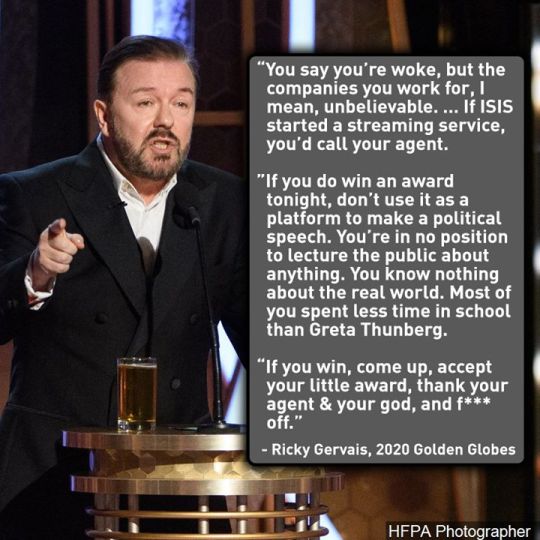
Anyway, I digress.
Punching down is a charge of course that has been levelled at Dave Chappelle for his many jokes about different groups who have invested a great deal in their identity and also exert their own social and political power. But does he really do that? I don’t think so.
The mainstream media critics publicly hated his comedy special, but the ordinary audience overwhelmingly loved it (if rotten tomatoes metric score of 96% approval is anything to go by). It’s clear that many in the mainstream media had not really watched the show or gave an accurate account. Indeed the mainstream cultural critics in the US and in the UK prevented its readers from knowing that a debate was even happening, let alone what it is really about. If the argument about gender theory is mentioned at all, it is dismissed as a bunch of “anti-trans” bigots - aka ‘TERFs’ - hurting a beleaguered and tiny minority, for some inconceivable, but surely awful, reason.
As one of my favourite conservative writers (and gay rights advocate) and as an authority on the conservative philosopher, Michael Oakeshott, Andrew Sullivan put it really well, as he always does:
“Chappelle’s final Netflix special, ‘The Closer,‘ is a classic. Far from being outdated, it’s slightly ahead of its time, as the pushback against wokeness gains traction. It is extremely funny, a bit meta, monumentally mischievous, and I sat with another homo through the whole thing, stoned, laughing our asses off - especially when he made fun of us. The way the elite media portrays us, you’d think every member of the BLT community is so fragile we cannot laugh at ourselves. It doesn’t occur to them that, for many of us, Chappelle is a breath of honest air, doing what every comic should do: take aim at every suffocating piety of the powers that be - including the increasingly weird 2SLGBTQQIA+ mafia - and detonating them all.
‘The Closer‘ is, in fact, a humanely brilliant indictment of elite culture at this moment in time: a brutal exposure of its identitarian monomania, its denial of reality, and its ruthless tactics of personal and public destruction. It marks a real moment: a punching up against the powerful, especially those who pretend they aren’t. Bigoted? Please. Anyone who can watch this special and think Chappelle is homophobic or transphobic is either stupendously dumb or a touchy fanatic. He is no more transphobic than J.K. Rowling, i.e. not at all, and the full set masterfully proves it to anyone with eyes and ears.“
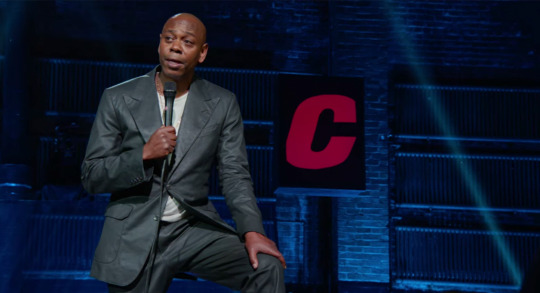
I would argue it’s hugely reassuring to see the ‘powerful’ laughing at themselves - in this case the LGBTQ+ community’s more shrill and self-righteous social justice warrior activists that brook no public criticism of their conduct against women and other critics who don’t have the power to fight back and are instead cancelled. It is a trusim to say that finding oneself comical is a token of maturity. It means being able to see one’s faults, without being too defensive about them. This, I argue, was one of the messages of Chappelle’s comedy show.
The thing that intimidates us isn’t actually power. It’s power that looks like it’s going to be inhumane: insensitive, unkind power. So we’re intently interested in things that reveal a mature, kindly sort of power.
Humour often provides a mechanism whereby the powerless (or at least the less powerful) can give constructive but pointed feedback to the powerful. Whether the powerful - in Chappelle’s view that would be the trans and social just warrior crowd - can take social commentary masked as a joke says a lot about their level of maturity.
Humour, as one neurosurgeon sister put it, is a form of psychological processing, a coping mechanism that helps people to deal with complex and contradictory messages, a response to conflict and confusion in our brain. Humour that is in bad taste or cruelly targeted at particular groups may generate conflict, but humour is also our way of working through difficult subjects or feelings. In this sense the comedian’s role is not validate our feelings but to make us think.
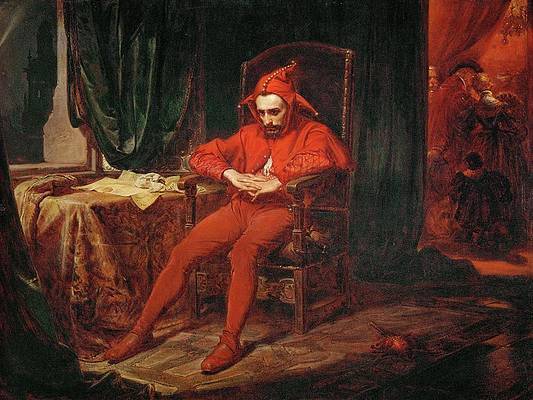
In olden days, the idea of the court jester - an officially licensed and salaried comic - was built on the importance of humour to the mental health of the powerful. Even if in the council room or around the dinner high table, the leading people didn’t feel much like joking, the jester was required to make barbed, witty and perhaps mocking remarks to deflate pomposity and restore sane perspective. The high table may not be occupied by the feudal elites anymore but by a more egalitarian society now.
Who can disagree with the fact that all of us - leftist, conservative, revolutionary, traditonalist, straight, gay, lesbian, bi, trans, different colours and many creeds - are not in need of our inflexible egos and the self-important pompous bubbles we inhabit from being burst open from time to time?
If we live in a world where everyone demands equality, in other words to sit at the same high table, then we also sign up to be equally ‘offended’ by the court jester, however fair or unfair it may feel.
The shrill of cancelling a comedian is not the answer if we find a joke offensive. We have the right to protest. We can protest by...not laughing. It really is that simple.

Thanks for your question.
#ask#question#humour#comedy#go woke go broke#woke comedy#woke#dave chappelle#british humour#society#jewish humour#culture#jokes#funny#humour is the best medicine#personal
32 notes
·
View notes
Text
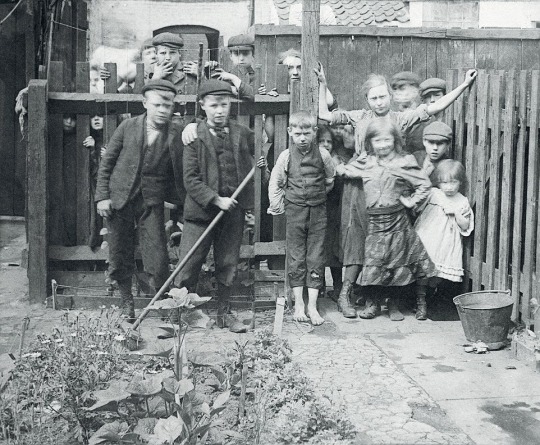
“Spitalfields Nippers”, East End street kids. Spitalfields, London, early 1900s - By Horace Warner.
12 notes
·
View notes
Text
Las botas de Adelaide
Las botas de Adelaide
Adelaide Springett con ocho años – basada en la fotografía de Horace Warner , Londres 1901 – Spitalfields Life – (acuarela)
Adelaide nació en Wapping en Febrero de 1893. Sus padres William y Margaret eran vendedores ambulantes. Su hermana Susannah murió con cuatro años, y las gemelas Ellen y Margaret, murieron al nacer. Con ocho años, Horace Warner la fotografió en el Refugio del Ejército de…

View On WordPress
11 notes
·
View notes
Text
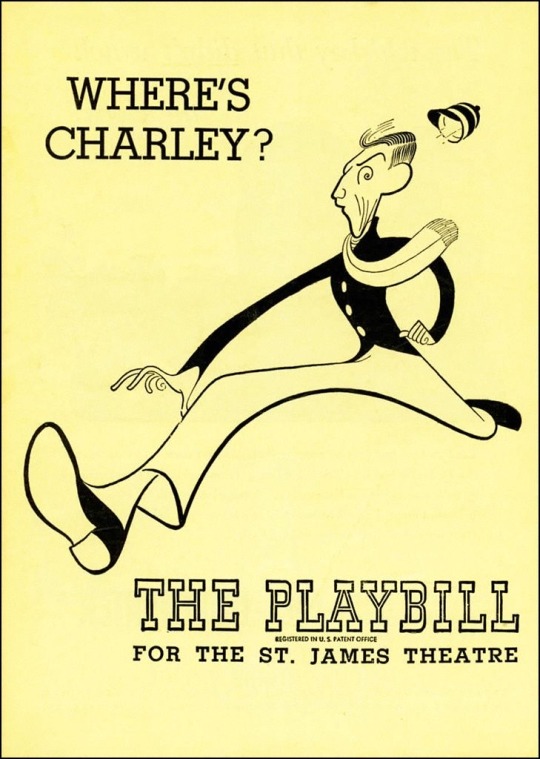
TONY AWARD
1949
BEST ACTOR IN A MUSICAL, RAY BOLGER
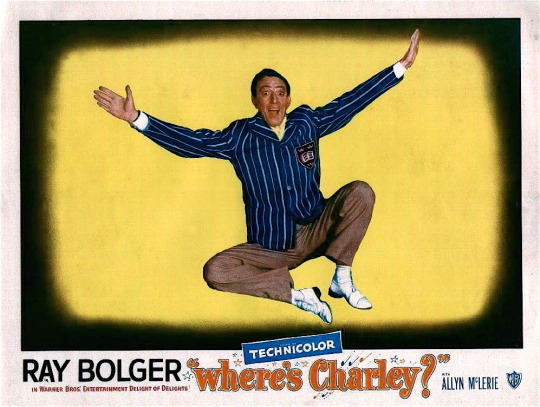
Where’s Charley? opened on Broadway at the St. James Theatre in New York on October 11, 1948 and ran for 792 performances. It was filmed by Warner Brothers in 1952 with Ray Bolger, Allyn Ann McLerie and Horace Cooper repeating their original roles.
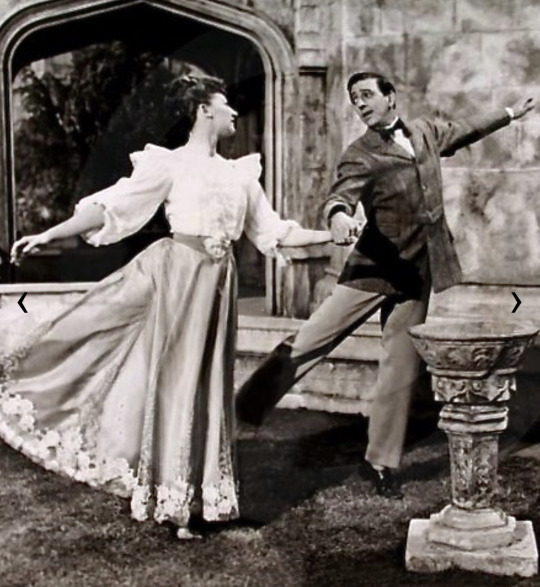
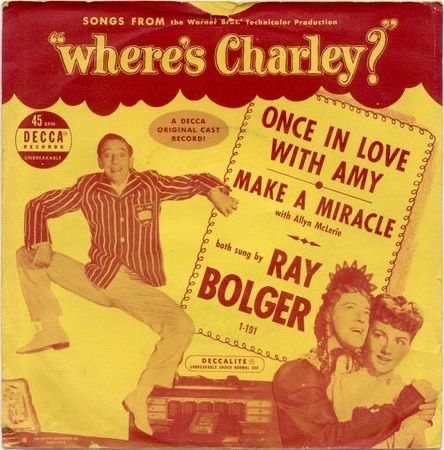
#ray bolger#happy birthday!#where’s charley?#allyn mclerie#broadway musical#1948#hollywood musical#1952#frank loesser#tony awards#playbill#once in love with amy#hit song
6 notes
·
View notes
Photo

Corinne Griffith and Victor Varconi in The Divine Lady (Frank Lloyd, 1929)
Cast: Corinne Griffith, Victor Varconi, H.B. Warner, Ian Keith, Marie Dressler, Montagu Love, William Conklin, Dorothy Cumming. Screenplay: Forrest Halsey, titles by Harry Carr and Edwin Justus Mayer, based on a story by E. Barrington. Cinematography: John F. Seitz. Art direction: Horace Jackson. Film editing: Hugh Bennett. Music: Cecil Copping.
Frank Lloyd is a director nobody remembers today except for the fact that he won two best director Oscars. Unfortunately, they were for movies that almost no one except film scholars and Oscar completists watch today: this one and Cavalcade (1933). His other distinction is that his Oscar for The Divine Lady is the only one that has ever been awarded for a film that was not nominated for best picture.* It's a moderately entertaining film about the affair of Emma Hamilton (Corinne Griffith) and Lord Horatio Nelson (Victor Varconi) -- a story better told in That Hamilton Woman (Alexander Korda, 1941) with Vivien Leigh and Laurence Olivier as the lovers. Griffith is one of those silent stars whose career didn't make it into the sound era, reportedly because her voice was too nasal. She was, however, considered* for the best actress Oscar, which went to Mary Pickford for Coquette. She doesn't have to speak in The Divine Lady: Although it has a synchronized music track, including Griffith supposedly singing (but probably dubbed) "Loch Lomond", and sound effects, including cannon fire during Nelson's naval battles, there is no spoken dialogue. The only truly standout performance is a small one by Marie Dressler as Emma's mother: She has a funny slapstick bit at the beginning of the movie, but disappears from the movie far too soon. The cinematography by John F. Seitz (miscredited as "John B. Sietz" in the opening titles) was also considered* for an Oscar, but it went to Clyde De Vinna for White Shadows in the South Seas (W.S. Van Dyke and Robert J. Flaherty, 1928).
*If you want to get technical about it, there were no official nominations in any of the Oscar categories for the 1928-29 awards. What are usually regarded as nominees are the artists and films that Academy records show were under consideration for awards. In Lloyd's case, he was also under consideration for directing the films Drag and Weary River during the same time period, but when his win was announced, only The Divine Lady was specified.
3 notes
·
View notes
Note
Brain Academy presents: Cruella cast
Zubi Warner as Estella/Cruella
Dot Warner as Anita Darling
Skippy Squirrel as Roger Radcliffe
Cora Norita as Baroness Von Hellman
Wakko Warner as Horace
Katie Kaboom as Jasper
Yakko Warner as John the Valet
Skylar Hippo as Catherine Miller
Brain Academy students as the rest of the characters
Not really into that movie, sorry
3 notes
·
View notes
Text
101 Dalmations Headcanon
Just watched the film and came up with a few headcanons.
1. The scene when Rodger and Anita first meet was performed in one take. This wasn’t because they were just good enough to do it in one take, but because it involved them falling into water. Although toons don’t technically get ill the director didn’t want them falling into water to many times, especially as it wasn’t a little water, they were completely drenched. Also the fact that Perdita had to tangle her lead round their legs was so unpredictable they decided to just do it once.
2. This was also one of the first movies when the antagonist [Cruella] and the protagonist [in this case, Anita] were encouraged to be friends. In-canon they were meant to be old school friends - meaning they’d have had to had known each other for at least ten years - so the producers suggested they meet up for coffee or something to try and develop a friendship.
Initially the both of them weren't exactly thrilled about this - Anita was naturally suspicious of Cruella and Cruella thought Anita was an awful goody-two-shoes - however when they began meeting up Anita discovered Cruella was a lot more relaxed and less psychotic of-set and just took great pride in her ability to act like a demon, and Cruella discovered Anita had quite a good sense of humour [she likes plays on words and that sort of thing] and the two of them have a love of reading. Over the years this has developed into a genuine friendship.
No one really understands it - even Rodger doesn’t quite get it - but the two women are happy with it, so it’s fine.
3. 101 Dalmatians was also one of the first films that changed the way the contracts worked. Before it was fairly simple - all toons in the cast get paid and breaks and looked after while filming, then afterwards they get a house in Toontown, a cut of royalties on the show and merchandise.
It was quickly figured out after the movie finished filming that the Radcliffe’s couldn’t afford to look after that many dogs and afford upkeep on the house they were in. [They did move into one in the country which was much bigger. The same one that was later seen in ‘Patch’s London Adventure’] Even selling the first house [which went for a LOT of money] didn’t help them to much long-term.
Rodger and Anita brought this up with Disney and initially the response was to suggest they sell some of the puppies so they’d have less to look after.
Anita and Rodger refused that offer. Then Cruella got involved. Since the show ended she remained in touch with Jasper and Horace, who had gotten new careers as Toontown journalists. So she fed the story to them and they blew it up. ‘Disney refusing to help stars!’ ‘Puppies left to starve on street!’ that kind of thing. It was all over Toontown - even in the Warner Bro/Hanna-Barbera section.
Funnily enough about a week after the story was published Disney contacted Anita and Rodger and said that they would pay them £250 a month to help with upkeep for the puppies. [This is the equivalent of £6,150 today, according to historical inflation calculator] Over time this has gone up and now in 2022 they’re paying £30,000 a month to them.
8 notes
·
View notes
Note
Brain Academy presents: Cruella cast
Zubi Warner as Estella/Cruella
Dot Warner as Anita Darling
Skippy Squirrel as Roger Radcliffe
Cora Norita as Baroness Von Hellman
Wakko Warner as Horace
Katie Kaboom as Jasper
Yakko Warner as John the Valet
Skylar Hippo as Catherine Miller
Brain Academy students as the rest of the characters
Wow. They are very suited to these roles. And I love that Zubi is back in the lead role. ^^
4 notes
·
View notes
Text
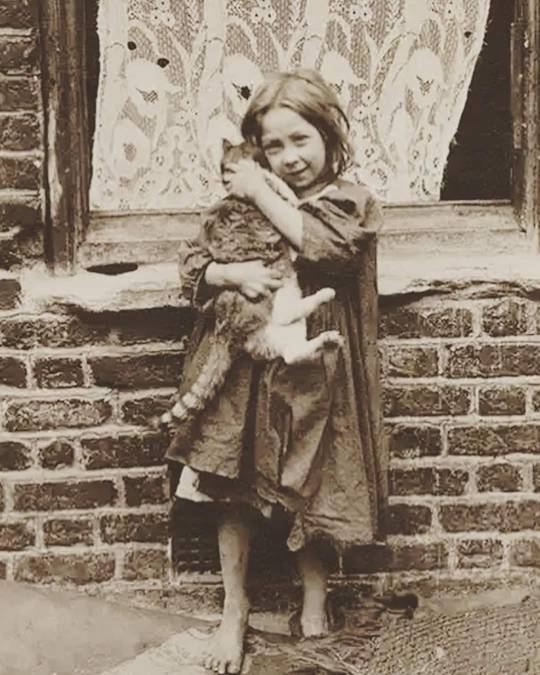
I wrote a letter
To my inner child
And, I told her
How loved she was by me
And, if no one else
Ever told her so
She knew
How loved she was, by me
A Little Poem by Athey Thompson
Taken from A little pocket book of poems by
Athey Thompson.
A little girl and her cat in the streets of East London, Early 1900s.
Photograph taken by Horace Warner.
Tales of the old Forest Faeries
10 notes
·
View notes
Text
i know it's early but if want to add on to this list for nov to dec 2023 maybe jan to feb 2024 of toon throughout the years.
1913 - Krazy Kat
1914 - Gertie Dino
1918 - Koko the clown
1919 - Felix the cat
1919 - Olive Oyl
1922 - Julius the cat
1925 - Pete
1926 - Winnie the Pooh
1927 - Oswald the lucky rabbit
1927 - Ortensia cat
1928 - Clarabelle cow
1928 - mickey mouse
1928 - minnie mouse
1929 - horace horsecollar
1929 - Bosko talks Ink kid
1929 - popeye the sailor man
1930 - pluto
1930- bimbo
1930 - betty boop
1932 - goofy goof
1932 - Bluto
1933- Buddy (looney tunes)
1934 - donald duck
1935 - porky pig
1935 - little kitty
1935 - oliver owl
1935 - ham & ex
1935 - beans the cat
1936 - owl Jolson
1937 - Petunia pig
1937 - gabby goat
1937 - Daffy duck
1937 - egghead
1937 - elmer fudd
1939 - Casper
1939 - sniffles
1940 - Tom & Jerry
1940 - daisy duck
1940 - bugs bunny
1940 - woody woodpecker
1941 - fauntleroy fox
1941 - crawford crow
1942 - spike the dog
1942 - beaky buzzard
1942 mama buzzard
1942 - henery hawk
1942 - jose carioca
1942 - tweety bird
1943 - droopy
1943 - Chip and Dale
1944 - Panchito pistoles
1945 - Sylvester cat
1945 - Pepe le Pew
1945 - yosemite sam
1946 - gossamer
1946 - foghorn leghorn
1947 - goofy gophers (Mac and Tash)
1947 - scrooge mcduck
1948 - gladstone gander
1948 - hippety hopper
1948 - Marvin the Martian
1949 - wile e Coyote
1949 - road runner
1949 - tyke the pup
1949 - playboy penguin
1949 - penelope pussycat
1950 - granny
1950 - Sylvester Jr
1951 - clyde bunny
1952 - gyro gearloose
1953 - sam sheepdog
1953 - ralph wolf
1954 - Goldie o-gilt
1954 - Taz
1954 - witch hazel
1954 - speedy Gonzales
1955 - Michigan J. Frog
1956 - flintheart glomgold
1957 - grinch
1958 - huckleberry hound
1958 - yogi bear
1958 - boo boo
1959 - quickdraw McGraw (Latino)
1959 - snugglepuss (gay)
1961 - Ludwig von drake
1961 - magica de spell
1964 - fethry duck
1978 - Garfield
1981 - Mario
1981 - donkey kong
1981 - Pauline
1983 - Luigi
1985 - princess peach
1985 - bowser
1987 - webby
1987 - Beakley
1987 - launchpad
1987 - Duckworth
1989 - Fenton
1990 - babs
1990 - buster
1990 - plucky
1990 - hamton
1991 - sonic the Hedgehog
1991 - doctor Eggman
1991 - drake mallard/darkwing wingduck
1992 - tails
1993 - Amy rose
1993 - yakko warner
1993 - wakko warner
1993 - dot warner
1994 - knuckles
1996 - lola bunny
1999 - spongebob
2001 - shadow
2001- Shrek
2001 - donkey
2001- princess fiona
2001 - gingerbread man
2001 - Pinocchio
2004 - puss in boots
2011 - kitty softpaws
2011 - Humpty Dumpty
2011 - tina russo
2017 - Lena de spell
2017 - mark beaks
2022 - perrito
2022 - death
#toons throughout the years 2023#toons throughout the years 2024#a list of it#you ask me who to add.
5 notes
·
View notes
Photo

🔸 c1900, photographer Horace Warner captured over two hundred startling images of children living in a rundown slum area of East London. He named these children the ‘Spitalfields Nippers’. In 1913 the Bedford Institute paid two pounds, 15 shillings and sixpence for roughly 20 photographs he had taken of the local children. It used them in its fundraising activities, reproducing them on handbills and collection boxes. He was a superindant for the charitable Bedford Institute (nine Quaker missions operating in the East End of London at the end of the 19th cent) rand was appalled by the poverty in much of the East End of London. His Quaker faith and own compassion led him to document the people he met and show them as real human beings. The pictures are posed but the genuine faces shine through. They are children surviving in conditions hard for us to imagine now (though not in other parts of the world); adolescents often already working in a harsh world with no safety net. Many have no shoes and clothes handed down or bought at the thrift shops of the time or the many markets in London. Though Governments seemed lamentably slow to act, many individuals, authors (notably of course Dickens) and artists depicted the life of the poor, often particularly the children. The paintings were often toned down to sell but the rich in London often lived close to areas where they would have seen such children every day…. Credit: Horace Warner/Charles Booth #victorianchaps #retro #victorian #dickensian #goodolddays #badoldtimes #poverty #london #vintqge #pastlives #history #1900s #streetlife #nostalgia (at Spitalfields London) https://www.instagram.com/p/Co7Lk09Dv0V/?igshid=NGJjMDIxMWI=
#victorianchaps#retro#victorian#dickensian#goodolddays#badoldtimes#poverty#london#vintqge#pastlives#history#1900s#streetlife#nostalgia
15 notes
·
View notes
Text
Birthdays 5.17
Beer Birthdays
Bert Grant (1928)
JJ Jay (1959)
Five Favorite Birthdays
Sandro Botticelli; Italian artist (1444)
Craig Ferguson; comedian, television talk show host (1962)
Bob Saget; comedian, actor (1956)
Erik Satie; composer (1866)
Dave Sim; comic book artist (1956)
Famous Birthdays
Sasha Alexander; actor (1973)
Stewart Alsop; journalist (1914)
James "Cool Papa" Bell; St. Louis Stars CF (1903)
Bill Bruford; rock drummer (1949)
Andrea Corr; pop singer (1974)
Horace Elgin Dodge; auto maker (1868)
Enya; pop singer (1961)
Dennis Hopper; actor (1936)
Edward Jenner; invented vaccinations (1749)
Alan Kay; computer scientist (1940)
Sugar Ray Leonard; boxer (1956)
Taj Mahal; singer, songwriter (1942)
Jackie McLean; jazz saxophonist (1932)
Bob Merrill; songwriter (1921)
Jim Nantz; television sportscaster (1959)
Brigitte Nielsen; actor (1963)
Birgit Nilsson; opera soprano (1918)
Maureen O'Sullivan; actor (1911)
Bill Paxton; actor (1955)
John Penn; signer of the Declaration of Independence (1741)
Dennis Potter; writer (1935)
Trent Reznor; rock singer, musician (1965)
Seth Warner; revolutionary war hero (1743)
0 notes